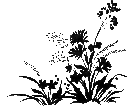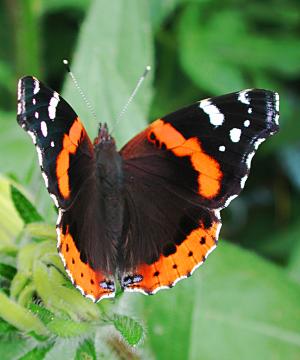 |
The Preserve |
News and Events |
Natural History |
The Trail |
Monitoring |
Restoration |
Library |
Organization |
|
Todmorden Mills Wildflower Preserve
|
Nature NotesYour nature guide for the week August 2-August 8While some might say that summer has yet to get started this year, the onset of goldenrod flowering signals that it is already in decline.WildflowersThe start of goldenrod flowering this week means that a changing of the guard is about to happen in earnest in the Preserve. Till now, the meadows have been dominated by introduced species, particularly Queen Anne's Lace (also known as Wild Carrot) and Sweet-clover, both white-flowered. The goldenrods join other native species already producing their golden flowers, such as Cup Plant, Woodland Sunflower, and Grey-headed Coneflower. It is a bittersweet transition however, as the onset of goldenrod flowers also signals the beginning of the end for summer. Folklore has it that an early goldenrod blooms presages an early winter. Goldenrod flowering also alerts us to the impending flowering of Ragweed--the true culprit of late summer hay fever. Goldenrod is insect-pollinated and its sticky, heavy pollen grains are rarely airborne. Ragweed, on the other hand, is wind-pollinated and in hot and windy conditions the tiny pollen grains can travel for kilometres. If August or September weather (peak flowering time for Ragweed) continues the July trend, and is humid and wetter than usual, then Ragweed dispersal will be reduced as the pollen grains are weighed down with moisture--good news for allergy sufferers. In the swamp portions of the woodland trail, native Spotted Jewelweed is flowering. The speckled orange flowers look like trumpets dangling beneath the leaves. An introduced species, Himalayan Balsam which is related to the native jewelweeds and is also in the Touch-Me-Not family, has invaded the swamps at Todmorden and become an unwanted guest. Its pink flowers are almost twice the size of those of Spotted Jewelweed, and it towers over the native species. Insects
Muddy puddles at the construction site at the north end of the Paper Mill have provided Mud Dauber Wasps with perfect nest-building material. Mud Daubers come in a variety of shapes, sizes and colours; a common species has long black and yellow legs and the characteristic "thin waist". The female uses her mandibles to scrape wet mud up from the edge of the puddle, works it into a ball, then carries it off to the nest-site which is usually in the eaves of a building. She builds a chambered nest with mud and provisions it with grasshoppers and spiders she has caught and immobilized. The prey will provide food for her larvae. The European Fire Ant is very active in the Preserve at present. This species is quite aggressive, and female workers will sting if you disturb them. We recommend staying on the formal trail, wearing long pants tucked into socks, and spraying repellent on boots. Nature Notes is researched and written by Mike Dennison and Alejandro Lynch, and is published each week by Hopscotch Interactive (www.hopscotch.ca). In addition to this online version, Nature Notes is available as a print-friendly PDF and as a text-only email version. Please contact Mike Dennison to receive these, or for more info (tel: 416-696-7230, email: dennison@hopscotch.ca). |
| Copyright © 2003-2004 Todmorden Mills Wildflower Preserve |
